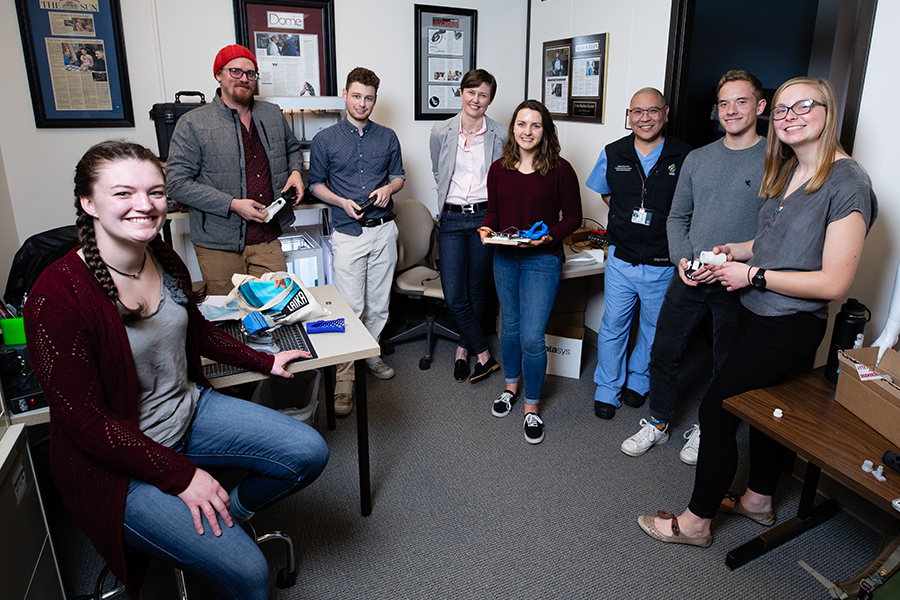
Engineering
April 6, 2020

At Oregon Health & Science University (OHSU), trauma surgeon Dr. Albert Chi has a vision to make low-cost or free 3D printed protheses for children. A group of four Shiley School of Engineering students are helping Chi make this vision into reality. The interdisciplinary student team, with the help of Chi’s lab, are designing a 3D printed lower arm myoelectric prosthesis that will be given to a specific user at the end of the project.
“The prosthesis will have thumb abduction/ adduction capabilities and wrist pronation and supination capabilities,” mechanical engineering student Kristen LeBar ’20 said. “A myoelectric prosthesis is controlled and powered by muscle impulses, which are being read from the user’s upper arm.”
Traditional protheses are expensive and sometimes inaccessible to some patients who have experienced limb loss. The use of 3D printed protheses is an inexpensive alternative and is easily customizable, especially for growing children. Using 3D printing technology, the capstone team is working on developing an affordable prosthesis that spans from below the elbow to the fingers.
“On the team, I have been tasked with reading EMG impulses from the user’s arm, classifying the data to determine what part of the arm the user is trying to actuate, and actuating the motors inside the prosthesis to move the thumb and wrist,” said Jacob Apenes ’20, a computer science student.
Shiley School of Engineering Assistant Professor Jen Symons connected Chi to the University of Portland after attending a research talk in Portland. After one of her students reached out to invite Chi to campus, conversations began about how the Shiley School of Engineering could become involved with his work. Shiley School of Engineering alumnus Evan Fontaine ’18 (ME), ’19 (BME) works in Chi’s lab and has been a resource and mentor to the students on this project.
“It’s been fantastic working with the University of Portland students. They are so inspiring and really push and elevate the designs,” Chi said. “We are all learning together on how to bridge patient clinical care and engineering.”
The team is now working on iterations of their design to ensure all components are compatible and capable of performing the required tasks.
“This kind of project allows us to apply what we have learned in the classroom and to grow as engineers, team members, and people,” said mechanical engineering student Alexis Peltier ’20. “It has given us a better idea of where our interests lie for a successful and meaningful engineering career.”
According to Symons, the team’s capstone advisor, this multidisciplinary project has given students the insight on how engineering projects work in the real world.
“This project is a powerful opportunity for students to realize how their skills, knowledge, and effort can positively impact other people,” Symons said. “The students have been consulting with an end-user to inform a product’s design and are using their technical skills toward improving health and well-being of others.”
University of Portland
5000 N. Willamette Blvd.,
Portland, Oregon 97203-5798
503.943.8000
This website uses cookies to track information for analytics purposes. You can view the full University of Portland privacy policy for more information.
